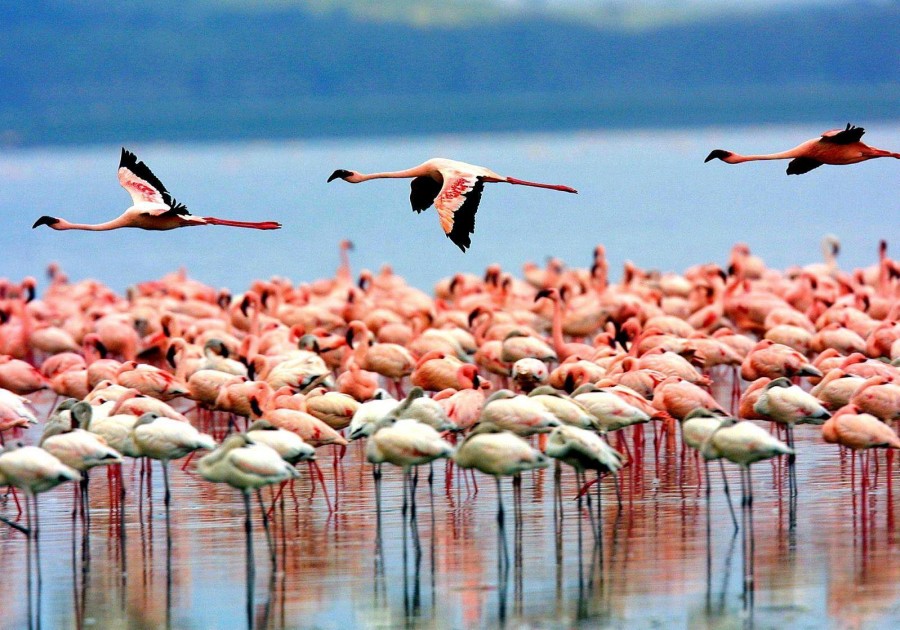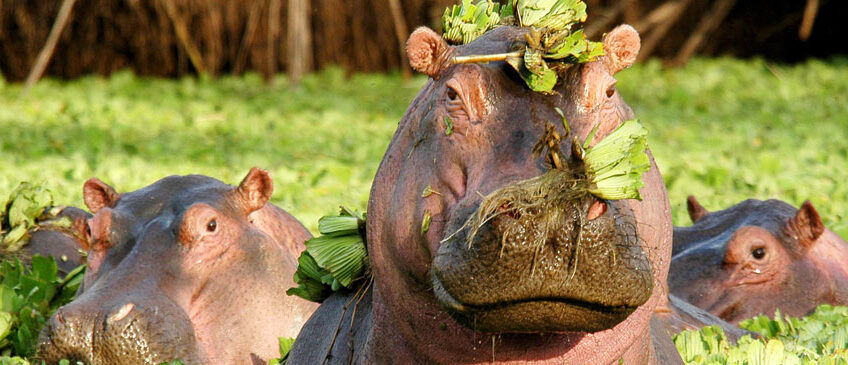Tanzania’s Lake Manyara National Park, which spans along the 50km broad floor of the great east African rift valley, is a picturesque treasure on the country’s northern tourism circuit. The best time to see the rare tree-climbing lions of Tanzania, which can only be seen in Lake Manyara national park and Queen Elizabeth national park in Uganda, is when you visit Lake Manyara park.
Despite the park’s small size, it is something you do not want to skip while on a safari across Tanzania’s northern region. The national park is situated along the floor of the huge east African rift valley, beneath the Manyara Escarpment. One of Tanzania’s smaller national parks, Lake Manyara is located in the country’s northern region. It has a total area of about 330 square kilometers, of which the vast Lake Manyara occupies around 220 square kilometers.
Through the Kwakuchinja corridor, the park—a protected region rich in wildlife—is alternated with the renowned and serene Tarangire national park. Animals can now roam freely from Tarangire to Lake Manyara National Park as a result. Numerous animals can be seen along the main northern access route, especially in the direction of Lake Manyara and Serengeti national parks. Despite the national park’s tiny size, it includes several diverse ecosystems that serve as homes for numerous creatures, including birdlife, and also provide an amazing perspective.
When traveling to Serengeti National Park, the national park is situated along the northern road. The 126 kilometers south-west of Arusha that make up Lake Manyara National Park are reasonably accessible by road, but if you want to get there quickly, you should use air transportation. The extensive marang forest reserve, which is situated on an escarpment, borders the park. The Kwakuchinja animal migration corridor from Tarangire National Park borders Lake Manyara to the east. Lake Manyara Park is bordered to the west by Lake Mayara and to the north by the Engaruka Basin.
An alkaline soda lake makes up the national park, and its tree-climbing lions, which are rare in the northern circuit, may also be found in Queen Elizabeth National Park in western Uganda.
Activities in Lake Manyara National Park
Game viewing
The most popular and frequent activity in Lake Manyara National Park, as well as other national parks in the northern circuit, is game viewing. Because it is the only park on the northern circuit with a few tree-climbing lions, the park is special. On the Game Drive Safaris, the tree-climbing lions in Lake Manyara National Park can be seen hanging out in the enormous, ancient mahogany and the old candelabrum acacia trees with wide branches.
Tree Climbing lions
In addition to the lions that can scale trees, the Lake Manyara national park is also home to a variety of other animals, including giraffes, elephants, impalas, zebras, and baboons. During the big migration of the wildebeest, you may even be able to see some of them while on a game drive. Wild cats including lions, leopards, cheetahs, and hyenas that prey on the tiny herbivores live in the park. For safety concerns, it is preferable to use an armed ranger during wildlife drives in the Lake Manyara national park.

bird watching
Since Lake Manyara is home to a variety of bird species, including swamp birds, water birds, and forest birds that populate the lake’s shores, you may also enjoy bird watching there. The groundwater forest of this Manyara park is home to over 350 different bird species, including common flamingos, various storks, herons, egrets, cormorants, pink glossy ibis, sacred ibis long-crested eagles, spoonbills, and grey crowned cranes.
Guinea pigs, raucous silver cheeked hornbills, and crown eagles are among the other birds that live in the forest of Lake Manyara National Park. The dry season, which lasts from November to July and is when many migrating birds from southern Europe and northern Africa arrive in the park, is the greatest time to watch birds in Lake Manyara.
Canoeing
Another intriguing thing to do while visiting Lake Manyara park is canoeing. Despite being a salt lake, canoeing is allowed in Lake Manyara National Park on the lake itself. You can view several fascinating elements connected to this enormous lake when canoeing on Lake Manyara. Along the Lake Manyara shoreline, you may get a chance to witness the large silver bowls of salt deposits. While canoeing around Lake Manyara, you’ll get to see the stunning escarpment covered in a thick forest, as well as many water birds soaring above the lake.
Camping
Another activity you may engage in in Lake Manyara Park is camping, which is a really epic journey in the wilds of Africa. The park offers a large number of campsites in some of the most breathtaking locations. Five campgrounds in all are well-known, three of them are private and the other two are public. Bring your best camping equipment if you plan to camp in Lake Manyara; it will give the impression that you are on a true wilderness experience. All of the park’s camping areas are equipped with restrooms, running water, and a fine restaurant where visitors may savor delectable dishes made with a touch of African culture.
Guided nature walks
The park’s guided nature walks start from the woodlands perched atop the escarpment’s bluff. A knowledgeable park guide who knows the area well leads the way via the walking trails previously built in the national park during the nature walks. The guided nature walks will take you to some of the park’s most interesting locations, and they also give you a chance to see a variety of plants, trees, and birds, as well as Lake Manyara among other things. These excursions into the park’s natural surroundings are known as guided nature walks in Lake Manyara National Park.
Picnics
In the Lake Manyara National Park, picnics are truly epic, but the park also provides magnificent picnic sites that are free from all predators and tsetse flies. You must bring a packed lunch that you may eat while admiring the park’s natural environs, which include flora, warthogs, and birds. The park includes three main established picnic areas that are well-equipped with restrooms.
Best Time to visit Lake Manyara national park
The entire “to-do list” can be enjoyed at Lake Manyara at any time of the year. The dry season, which lasts from June to October, is the ideal time to visit the park. The greatest time to see wildlife in Lake Manyara park is during the dry season. For birdwatchers, however, the season lasts a long time, from November to July (for migrating birds). For the best Lake Manyara park excursions, you can make reservations with your preferred tour operator.


